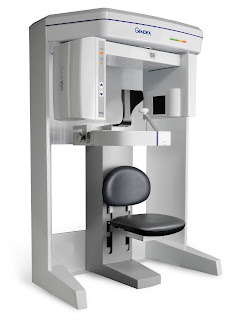
In my experience, while working as a dental hygienist in both pediatric and general dental practices for the last ten years, I find myself using a multitude of products that have been ordered by someone else. Disposable prophy angles are no exception. In preparing my tray for a 30-45-minute hygiene appointment, I typically open the drawer, grab my setups and place whatever prophy angle has been ordered on the slow speed. If I have an orthodontic patient, I will place two prophy angles, a regular firm cup and a prophy angle with a brush, on my tray. Working on an orthodontic patient would take me twice as long to polish because I would use the regular prophy angle first, then stop what I was working on to take that angle off the slow speed, unwrap the plastic wrapper of the prophy brush, put it on the slow speed, then clean around the brackets and arch wires. This is a cumbersome, time-consuming process.
Wouldn’t it be nice to have the best of both worlds and have the two together in one disposable prophy angle? Luckily, 2pro™ from Premier Dental has combined a traditional prophy cup with an interproximal cleaning tip. I was instantly intrigued by this concept for disposable prophy angles and had to give it a try.
 I have a difficult time keeping up with the volume of new products introduced to the hygiene market, all promising to be the latest and greatest. Most of the time, features that peak my curiosity regarding a product fail to perform to standards upon use. Every once in a while, a product like 2pro will catch my eye, and then exceed my expectations. Finding these gems is what allows us to bring something unique, with a point of differentiation, to the doctor about what the hygienist needs and prefers to be ordered.
I have a difficult time keeping up with the volume of new products introduced to the hygiene market, all promising to be the latest and greatest. Most of the time, features that peak my curiosity regarding a product fail to perform to standards upon use. Every once in a while, a product like 2pro will catch my eye, and then exceed my expectations. Finding these gems is what allows us to bring something unique, with a point of differentiation, to the doctor about what the hygienist needs and prefers to be ordered.Unlike the myriad of other prophy angles on the market, 2pro boasts features my patients immediately notice. The first feature I liked about 2pro is the neon, fun colors. Kids, young and old, enjoy the vibrant colors while some focus on the translucent design as they try to figure out how it works.
In terms of ergonomics, I felt the difference as soon as I put 2pro in my hand. The ergonomic, 100˚ design allows efficient and comfortable access to all areas of the mouth. Meanwhile, the gearless design allows 2pro to run quietly and smoothly with less heat buildup and near-zero freeze-ups. Let’s face it; freeze-ups are frustrating. The prophy angle stops turning, so you have to stop working. 2pro has a sturdy, latex-free design that easily and securely attaches to the handpiece.
Perhaps 2pro’s most unique feature is its ability to instantly transform itself from a prophy cup into a polishing tip by simply removing the prophy cup. I no longer have to set up my operatory with a prophy cup, interproximal tip, prophy brush and take the time to switch between them. I save time, money and the aggravation of interrupting my prophy to switch handpiece angles. What a concept—hygienists working smarter, not harder!
 I use the prophy cup first on all surfaces I desire, then remove the cup and complete my fine polishing, using the convenient tip for gingival/proximal areas around implants, veneers and crowns. 2pro is ideal for my orthodontic patients who need the extra attention around brackets, ligatures and arch wires. I complete my cleanings in less time with less hand fatigue, better access and improved results.
I use the prophy cup first on all surfaces I desire, then remove the cup and complete my fine polishing, using the convenient tip for gingival/proximal areas around implants, veneers and crowns. 2pro is ideal for my orthodontic patients who need the extra attention around brackets, ligatures and arch wires. I complete my cleanings in less time with less hand fatigue, better access and improved results.2pro comes in three colors and four cup styles: soft/short, firm/short, soft/long, and firm/long to accommodate all of our personal preferences. When used in conjunction with ACP-enriched Enamel Pro® Prophy paste, I am confident that I am providing my patients with a high-quality dental cleaning.
Susan DiMarino, RDH, BS is a graduate of the Dental Hygiene Program at Harcum College and received her Bachelor of Science degree in business administration and management from Shippensburg University. She works in private practice as a dental hygienist and as a business consultant. She can be reached at susan@dmdsolutions.com.



